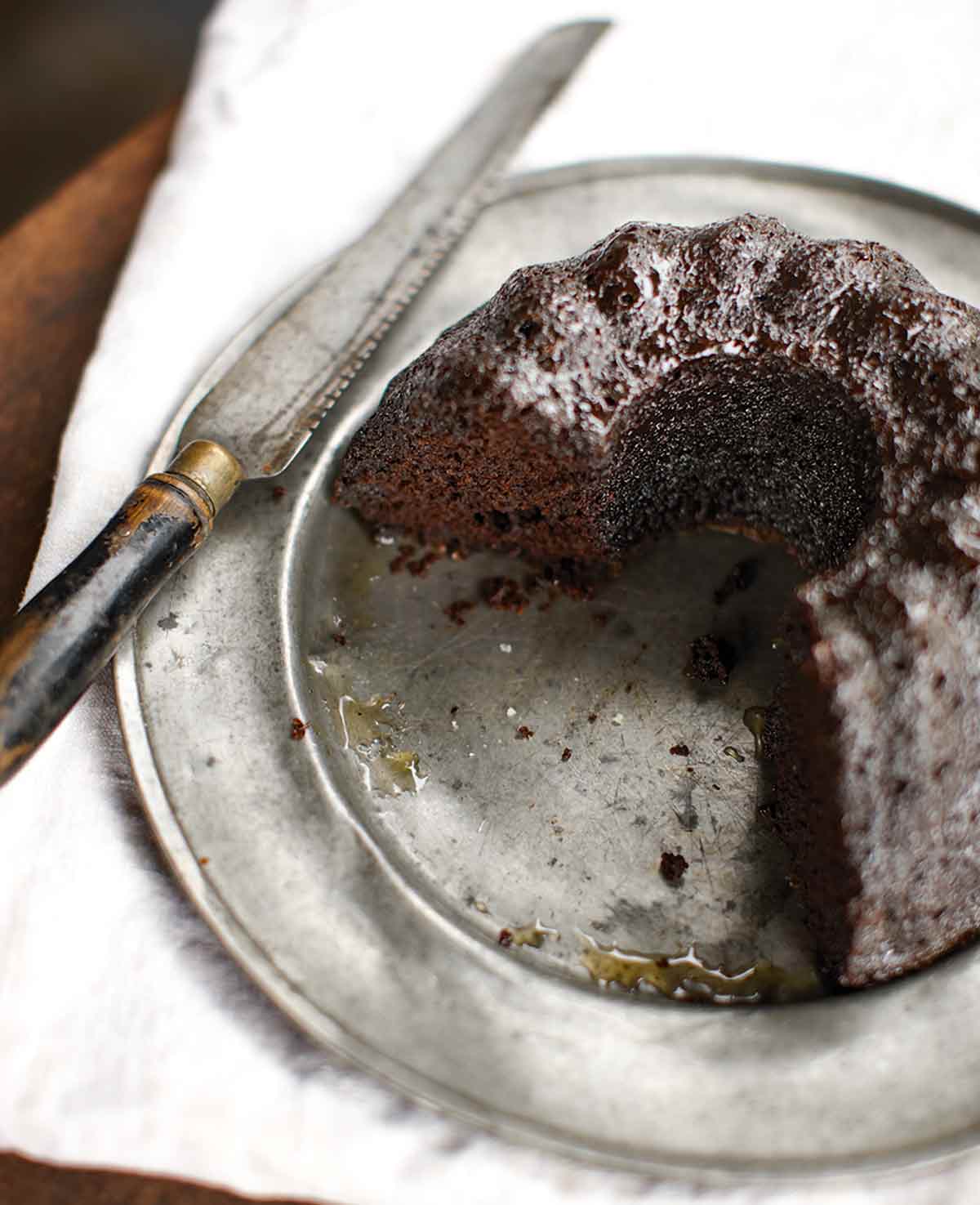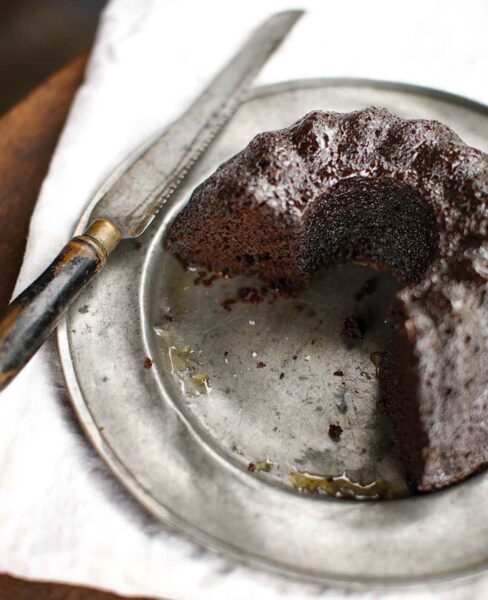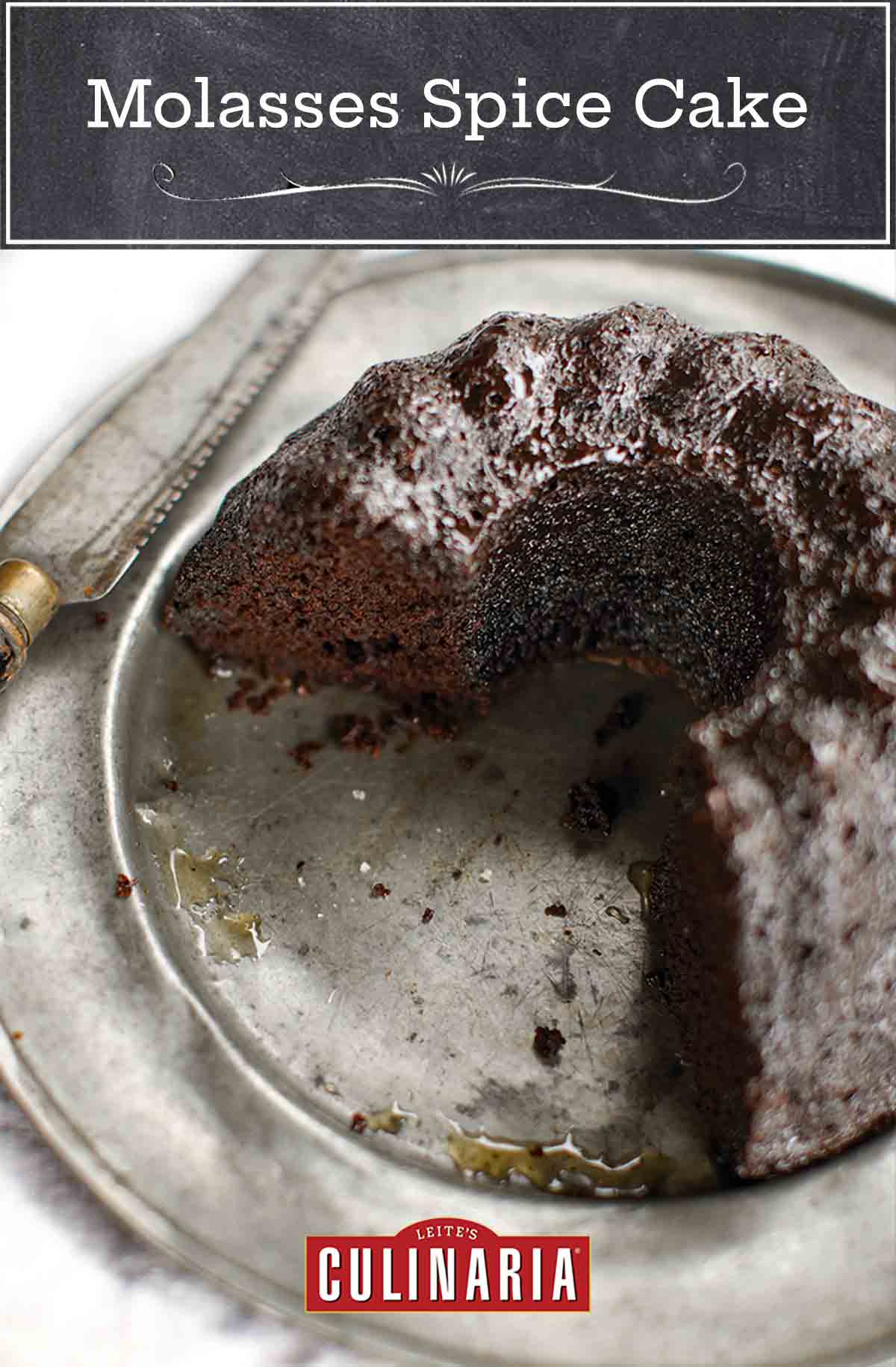
If you prefer your spice cake with more bitter notes, serve it while still slightly warm. If you prefer your spice cake to have a more pronounced sweet as opposed to savory notes, let it stand at least 8 hours at room temperature.–Renee Erickson
Molasses Spice Cake FAQs
Molasses is a sweet, earthy, and mildly bitter ingredient that gives this cake tons of flavor. Light molasses is more delicate than dark (sometimes called robust or full-flavored) molasses, which has a bold, strong flavor. Use whichever you prefer or have on hand. Do not use blackstrap molasses, however. It’s just too bitter for a cake like this.
Actually, we would recommend that you do. Make the cake a day before you plan to serve it so that the flavors have a chance to meld and soften a bit. Any farther ahead than that, however, and you’ll find the cake isn’t as moist as you might like.
This recipe calls for either navel or Seville oranges, and if you’re not familiar with Sevilles, you might be in for a bit of a surprise. While navel oranges are the quintessential orange, Sevilles have a decidedly bitter peel and quite a sour juice, which is prized for making British marmalade and used in certain alcohols. Use Sevilles if you want even more flavor in your cake.

Molasses Spice Cake
Equipment
- Bundt pan
Ingredients
For the molasses spice cake
- 2 1/2 cups all-purpose flour, sifted, plus more for pan
- 2 teaspoons baking soda
- 1 1/2 teaspoons kosher salt
- 1 tablespoon ground ginger
- 2 teaspoons ground cinnamon
- 1/2 teaspoon dry mustard
- 1/2 teaspoon black pepper
- 1 stick plus 2 tablespoons unsalted butter, plus more for the pan
- 3/4 cup granulated sugar
- 2 large eggs
- 1 cup molasses, (not blackstrap)
- 4 shots espresso or 2/3 cup strong brewed coffee plus enough whole milk to equal 1 cup, cooled
- 2 cups heavy cream, whipped just before serving (optional)
For the candied orange peel & syrup
- 2 navel or Seville oranges, preferably organic
- 1 cup granulated sugar
Instructions
Make the molasses spice cake
- Preheat the oven to 325°F (163°C). Butter and flour a Bundt pan, being careful to thoroughly coat all the nooks and crannies.
- In a medium bowl, whisk together the flour, baking soda, salt, ginger, cinnamon, mustard, and black pepper until well blended.
- In the work bowl of a stand mixer fitted with the paddle attachment, beat the butter and sugar on medium speed for 1 minute, until it lightens in color and texture. Add the eggs, molasses, and espresso and mix on low speed just until blended, scraping down the sides of the bowl with a rubber spatula as needed. The batter may appear a little lumpy, and that's perfectly okay. Add the flour and spice mixture and, still on low speed, mix just until the flour is completely incorporated and no streaks remain.
- Scrape the batter into the prepared Bundt pan and bake for 50 to 60 minutes, until the cake is puffed and a skewer inserted in the center of the cake comes out squeaky clean. Cool the cake in the pan for 10 minutes. Then invert the cake onto a wire rack situated on a baking sheet and let cool until the syrup is ready.
Make the candied orange peel & syrup
- While the cake bakes, halve and juice the oranges and then strain the juice into a liquid measuring cup. Carefully cut the bitter white pith and whatever remains from the orange segments from the orange peels, saving just the orange zest portion of the peel and composting the rest. Slice the peel into strips 1/4 inch thick. Toss the strips in a small saucepan and add enough water to cover. Bring the mixture to a boil and continue to boil for 5 minutes. Drain the strips, discarding the water. Let cool.
- Add enough cold water to the reserved orange juice to measure 1 cup liquid. Dump this liquid and the sugar into the pan with the poached orange peel. Return the peel to heat and cook at a gentle boil for about 10 minutes, or until the peels are very shiny and almost translucent. Transfer the candied orange peel to a piece of parchment paper to dry. Reserve the syrup.
Assemble everything for serving
- After the molasses spice cake has been turned out of its pan, bring the reserved syrup back to a simmer just until it's warmed through. Then brush some of the syrup all over the top and sides of the warm cake to saturate it. Let the syrup soak in for a few minutes, then brush again, repeating over and over again until you’ve used all the syrup.
- Serve the cake slightly warm or at room temperature, sliced into wedges, sprinkled with candied orange peel, and dolloped with freshly whipped cream.
Explore More with AI
Nutrition
Nutrition information is automatically calculated, so should only be used as an approximation.
Recipe Testers’ Reviews
Molasses, ginger, and spices—my favorite combo. This molasses spice cake was incredibly moist and came together rather easily. Though there are many steps from start to finish, it’s a fairly easy recipe. The cake turned out to be very moist and delicious. It wasn’t too sweet, and the addition of the glaze brought the right amount of sweetness to the cake.
The timing of the cake was bang on at about 50 minutes. I really loved making this cake. It’s a winner. I’m going to use chai spice the next time around.
If you enjoy gingerbread flavors, then you’ll love this cake with candied orange peel garnish. This is a delicious cake. The flavors are perfect! The crumb is light, and the cake is moist. This molasses spice cake has definitely earned a spot in my holiday baking rotation. The batter came together easily.
Since I didn’t have espresso, I used coffee. I poured the batter into my 12-cup Bundt pan with enough room left that I suppose a slightly smaller capacity pan would work as well. The cake was done in 50 minutes. It took 3 rounds of glazing with a few minutes between each to use up all the syrup. It was certainly worth it! The finished product was bursting with flavor and was incredibly moist.
I ate a piece warm—okay, 2 pieces—and another at room temperature and I’d recommend serving it warm when possible, although I loved it both ways. I buttered and floured my bundt pan as directed, but I gave it a quick squirt of nonstick cook spray too. (I found the spray easier to use on my pan’s hard-to-reach crevices. My cake was released very easily.)
Disclaimer: Your home is going to smell like Christmas on steroids! My molasses ran out at 3/4 cup. I made the executive decision to stick with it instead of the 1 cup called for in the recipe.
The recipe calls for eating the cake warm or at room temperature. When I first tasted the cake after all the glaze was absorbed, the texture was tender and rich, but the only taste that stood out was bitterness. After 8 hours, I mustered the courage to give this cake the benefit of doubt, and it made me a firm believer in second chances in life. The candied orange peel syrup had been seamlessly absorbed by the cake. The spices shined through. It was literally like tasting Christmas in one bite. WOW! Kudos!
Do NOT slice the cake for at least 8 hours. Even though the irresistible aromas are going to tempt you, allow the flavors to marry. Honestly, you don’t even require the additional candied peels and whipped cream to gild the lily.












I know of three different kosher salts and the same volume has three different weights. This could affect the outcome of the recipe. Which brand do you use?
Great point, Rich. When in doubt, use Diamond brand.
I screwed something up while making this and it was STILL delicious!
I needed a sub for the coffee, which one of my eaters can’t handle. I used orange juice, thinking a) acid for acid, and b) complementing the candied orange syrup. All else was exactly as written. My cake fell badly — or rather, never really rose. When I went to rotate its oven position at 30 minutes, the batter along the pan walls had risen but there was a center ring of flat batter, and it never rose at all there.
I went ahead and finished it, syrup glaze and all, and it was totally delish, but of course extremely dense, almost like a Sticky Toffee Pudding. I’ll definitely try again, but if anyone has a clue about my mishap, I’m all ears.
(Oh, and I double checked my oven temp too with an oven thermometer, and all was well on that front.)
Hi Maggie, my first inclination is the orange juice. I’ve never baked with oj as a substitute for coffee so I’m not sure of the reaction with the baking soda. How old was your baking soda? That might be another culprit.
Yes, that was my primary suspect too. But I can’t think of any reason that OJ would cause a failure to rise.
Baking soda was new, so no suspect there.
MaggieToo, I wonder if the orange juice wasn’t quite acidic enough to react with the baking soda to cause the necessary chemical reaction for the cake to rise?
Hmm. But wouldn’t you think that orange juice is even more acidic than coffee? Obviously I need to look that up.
But whatever, I’m making this cake again. It’s really, really good.
It is, MaggieToo. I just wonder if the sugar is interfering, or that some other chemical reaction is at play because of the substitution.
I am still a bit unsure about your comments on molasses.
I understand the uses for blackstrap but, you don’t seem to be considering molasses made from anything except sugar cane but, I am a died in the wool lover of the other types of molasses: sorghum, date, pomegranate, and a few others. It is rare that I ever use cane molasses.
Any thoughts on using a non-cane molasses in this recipe? I may make one but, it will be with sorghum.
Mike, you make a very good point. We distilled the molasses information down to its essence since we have a lot of readers for whom standard supermarket molasses is the only sort available to them. We weren’t trying to pretend it’s an encyclopedic dissemination of the topic. I think sorghum would be truly lovely in this recipe.